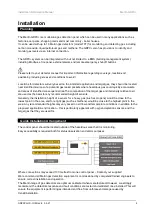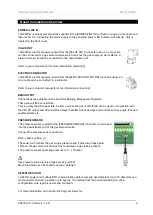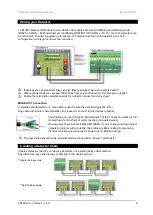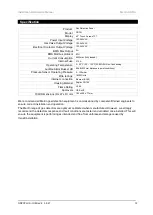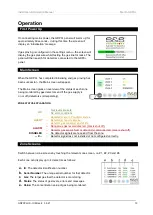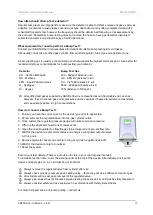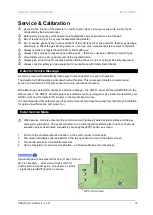
Installation & Operation Manual Merlin GDPX+
GDPXPLUS - IOM Iss: 8 02-21
16
General Maintenance
Cleaning
High concentrations of alcohol found in many products may damage, deteriorate or affect the gas
sensing elements – such as; wine; deodorants; stain removers; thinners!
Other gases and substances to avoid; Corrosives (i.e. chlorine & hydrogen chloride); Alkali metals;
Basic or acidic compounds; Silicones; Tetraethyl lead; Halogens and halogenated compounds!
Keep your gas detector in good working order - follow these basic principles;
Remove any dust/debris from the outer enclosure regularly using a slightly damp cloth.
Never use detergents or solvents to clean your device.
Never spray air fresheners, hair spray, paint or other aerosols near the device.
Never paint the device. Paint will seal vents and interfere with the device.
Manual Circuit Simulation Test
Access to the interior of the control panel or detector, when carrying out any work, must only be
conducted by trained personnel.
This does not test the gas sensing element itself.
When the test button on the circuit board is pressed and held the detector will simulate an
open circuit to ensure configured systems, outputs, alarms, indications and other external
devices operate as intended in response to gas.
When the test button is released – the test sequence will terminate and return to normal
operation.
Bump Test (Gas Response Check)
What is a Gas Response Check?
Response checks are often referred to as a ‘BUMP TEST’. Bump tests are important to make sure a
device is able to detect a release of gas as early as possible.
The aim of the bump test is to make sure a gas detector is working at its optimum by briefly exposing the
unit to a known concentration of the target gas that exceeds the highest alarm point. If the detector goes
into alarm and all system outputs/relays activate, then it is working safely.
If the system fails to operate as intended in an alarm state, the gas detector must not be used until a full
inspection and service has been conducted.
Why is it important?
A detector may visually appear in good working order, but its sensitivity can be inhibited by external
factors. Dust, humidity, temperature fluctuations, cleaning products, contaminants or sensor drift (ageing)
can cause a decline in sensitivity and eventual failure.
Regular bump tests are important to make sure the detector is able to detect a release of gas as early as
possible.



